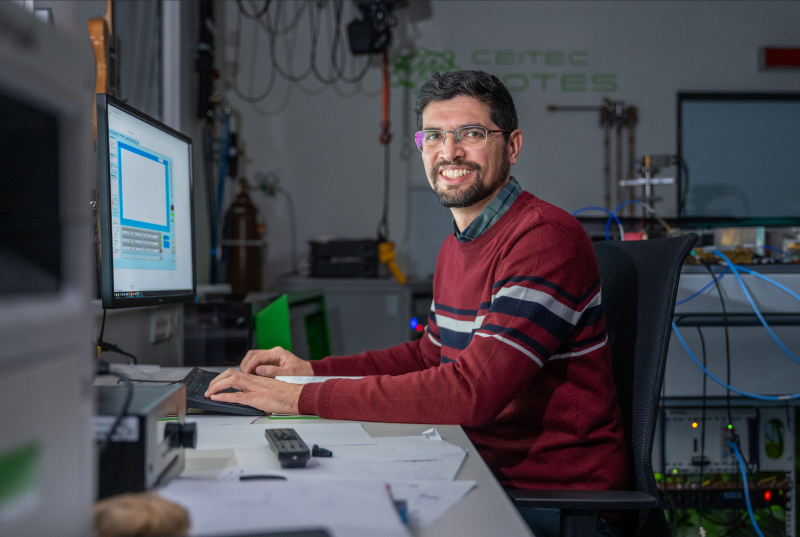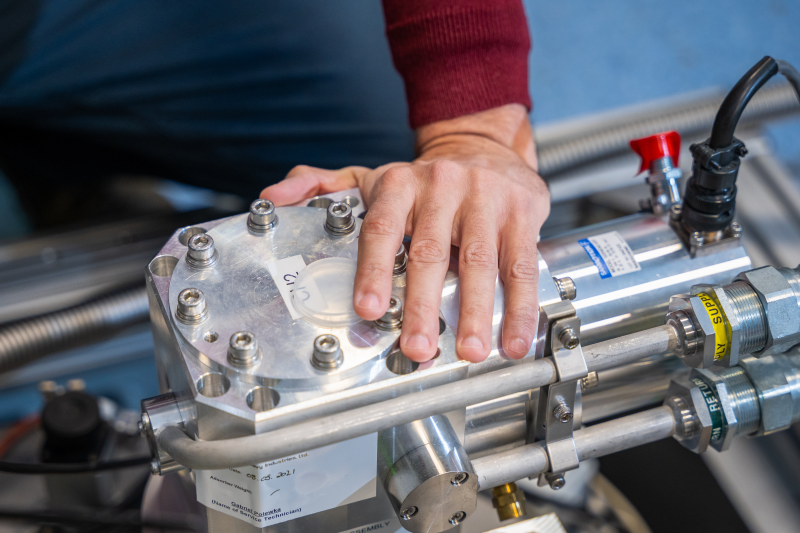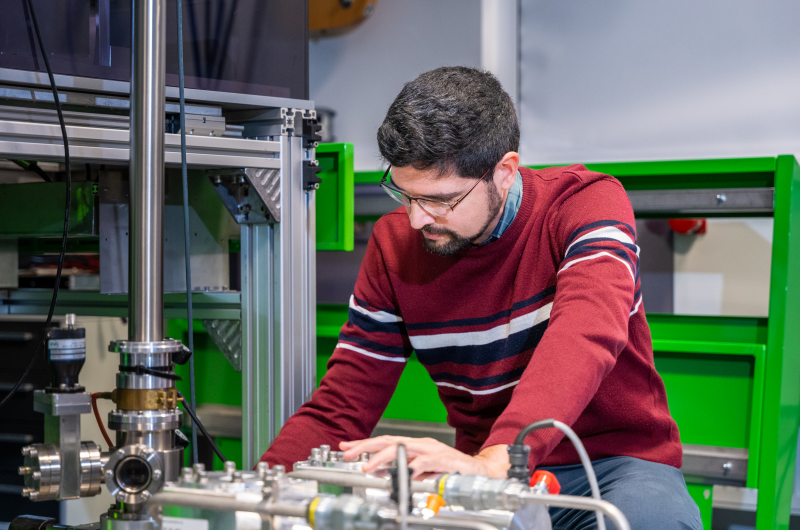People
Science is made by people and people are driven by passion. However, passion alone is not enough, says Vinicius Santana

Vinicius Santana, a Brazilian scientist exploring the area right between physics and chemistry, specifically the application of electron spin resonance (ESR), has been part of the Magneto-Optical and THz Spectroscopy group at CEITEC BUT led by Petr Neugebauer since 2018. The talented young scientist explains how he got into this highly interdisciplinary research and speaks about his plans now that he has been awarded the prestigious JUNIOR STAR 2024 grant by the Grant Agency of the Czech Republic (GAČR).
How long have you been in Brno and how did you get here?
I arrived in Brno in January 2018 to join Petr Neugebauer’s group. He had just gotten his ERC Starting Grant to develop a high-frequency high-field electron spin resonance (HF-ESR) spectrometer, the only of its kind in the Czech Republic and, to some extent, with worldwide unique capabilities of fast frequency sweeps for studying spin dynamics. It was an incredible journey where I participated in the construction of the new spectrometer from scratch. Before coming, in September 2017, I submitted a project to the Marie Sklodowska-Curie Actions (MCSA) for the mobility of international researchers. The project was not selected, although it was considered excellent. Therefore, it was funded by the Ministry of Education, Youth and Sports via the European Social Fund. Since then, I have dedicated my time to the application of ESR to solve problems in different scientific fields with a focus on molecular magnetism.
Could you describe your current research projects?
I collaborate with different groups and projects to use ESR for tracking radicals in chemical reactions and in the study of charge transfer in catalytical processes. This technique is sometimes the only resource to explain mechanisms that lead to the optimization of systems with relevance in everyday life, such as new drugs, water treatment, and novel technological materials. I also participate in collaborations where I help to characterize defects and dopants in oxides with different purposes, such as dyes, piezoelectrics and catalysts. I am currently a team member in a GAČR EXPRO project aimed at enhancing the NMR techniques using ESR, with an impact on medical diagnostics, and in another GAČR Standard aimed at preparing, characterizing, and depositing new single-molecule magnets (SMMs) on surfaces. These compounds are promising candidates to substitute large magnetic domains in storage devices with molecular units capable of storing one bit of information, drastically improving the storage density and efficiency. I have a bachelor, master and PhD in Physics. However, I have always worked at the intersection of physics and chemistry, characterizing new materials and particularly interested in the signatures of magnetic phenomena in electron spin resonance (ESR) spectra. My focus is on molecular crystals, particularly those where arrays of spins in molecules give rise to different quantum phases that can be controlled externally by the application of a magnetic field.

You have been awarded the JUNIOR STAR 2024 grant for one of your projects. What does that mean to you and your project?
It is a great opportunity to push forward my career from a junior postdoc researcher to a junior group leader. I really enjoy the laboratory work and data analysis and I intend to keep performing these tasks. But it is great to be able to coordinate a team that will work with me towards the aim of the project, which is related to the production and characterization of suitable molecular crystals with weakly coupled spins to demonstrate/reveal exotic phenomena, quantum entanglement and phase transitions. I am proposing to modulate the interaction between molecules in a crystal by varying the magnitude of the interaction among them, creating different networks of entangled molecules. This will be done by pushing forward methodologies in ESR in a wide range of frequencies and at high magnetic fields. What motivates me in my work, which is actually what got me to come to this field in the first place, is to explain unexpected features in the classical ESR spectra of magnetic materials. The outputs can also be helpful to people working in the field of molecular magnetism, providing new methodologies in ESR to explain the behaviour and the observed data in novel compounds. We will also develop new sample holders, so the project is a synergic interaction between engineering, physics, and chemistry. One of the goals of the project is to show that there are quantum phases in these molecular crystals that can be tuned by the orientation of an external magnetic field and to study the spin dynamics in these phases to demonstrate that they have an enhanced coherence time, with a potential application of these systems as quantum bits.
Could you describe the potential practical applications of your research?
The long-term goal and my vision with this project are to produce and characterize new molecules that can have a potential application as quantum bits (qubits), which are the basic units of a quantum computer. This technology will transform various aspects of society by enabling faster and more efficient computation, secure communication, and precise sensing. Materials for that purpose must have an enhanced coherence time, which is the time it can hold a given quantum state, enabling logical operations. We will design and characterize many new compounds that could eventually reach benchmark results.

Last but not least, what do you think is most important in a researcher’s work?
It is important to remember that science is made by people, and we are all driven by passion. However, passion alone is not enough to attract good people to the project. Having a work-life balance and enough time to think deeply about the problems we face in research is just as important as working hard. The conditions around the work are extremely relevant when it comes to our well-being as well as our performance. CEITEC, for example, provides an excellent environment, it has an excellent infrastructure so that we can focus mostly on our research work, and this is really great. I see a trend that is now getting a lot of attention about the mental health of postdocs around the globe, to improve working conditions, salaries and so on. The Nature group has published a series of articles on that (Postdocs are pushing back against low pay and conditions — more institutions must take heed, Falling behind: postdocs in their thirties tire of putting life on hold). And I believe that is an important topic to discuss if we want the young new generations to feel attracted to do basic and applied research, as it is the only way to push society forward.
Another very important thing is cooperation. Excellent work can only be achieved by means of collaboration. Big and complex problems usually require various expertise that is often spread among different groups, which can be in different cities or countries. High-level publications are usually the output of these interactions. I value this a lot and that is why, in my project, I have engaged many collaborators from different backgrounds to help guarantee the success of my team’s outputs.
Source: CEITEC BUT
Motor failures in electric vehicles can be detected by mathematical algorithms from the BUT
3D cartilage atlas of mid-trimester human embryos
Scanning zebrafish for microplastics: Micro-CT as a non-destructive way to image microplastics in biological samples
Awarded student Victory Jaques has developed a method to preserve researched microsamples of cultural heritage
A lack of hay for horses inspired Joes Jančář to create a smart nutrition for plants